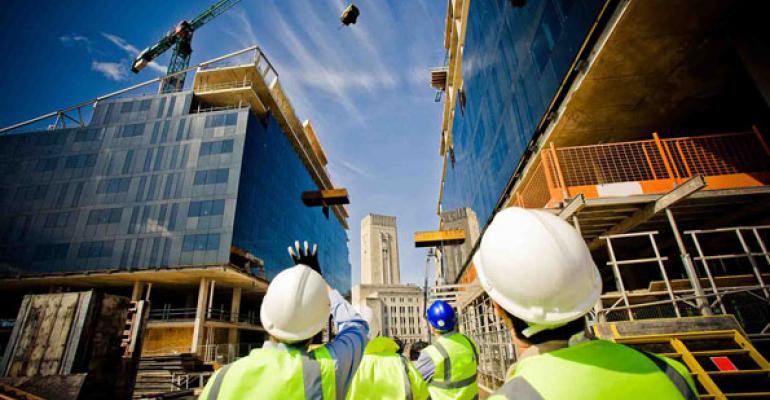Office construction was at a cycle high at mid-year 2019, despite rising construction costs, according to a second quarter office report from real estate services firm Transwestern. Over the last year, construction starts rose by 10.3 percent, bringing the total of new office space underway to 163.6 million sq. ft.
This level of new development, however, is challenging office developers and the construction trades, especially in the hottest office markets, where a combination of labor shortages and more expensive building materials have pushed construction costs to all-time highs. Hard and soft office construction costs (excluding cost of land) now range from a top of $1,000 to $1,200 per sq. ft. in New York to about $800 in San Francisco, Los Angeles and Seattle, to $600 per sq. ft. in Atlanta, Dallas and Houston, according to Gary Helminski, director of development, project and development services, Americas, with Cushman & Wakefield.
Construction costs rose by six to seven percent over the past two years and by another four to five percent this year, Helminski notes.
The trade war with China is exacerbating the problem, he adds, noting that the higher tariffs apply to the most expensive building materials. This includes 60 to 70 percent of structural steel produced, glass curtain wall, solar panels, electronics, and light fixtures. In fact, with the expansion of tariffs to additional products, there have been instances when checks for several hundred thousand dollars had to be physically delivered to U.S. Customs to get materials coming from China released, Helminski notes.
He expects cost increases to moderate next year at about four percent, as construction slows down as a result of investors being more cautious with a potential economic slowdown on their minds.
The waning optimism is already being reflected by lenders tightening their purse strings by requiring 10 to 15 percent more equity than a couple of years ago—the requirement is now up to 30 to 45 percent of the project cost, depending on the project risk and the developer. They also want to see 40 to 50 percent of the space pre-leased.
Vicky Schiff, managing partner at Mosaic Real Estate Credit, a Los Angeles-based lender that funds construction projects nationally, says her firm requires pre-leasing in projects that are solely office space. For office components in mixed-use projects that requirement is made on a case-by-case basis.
The trade war is affecting the viability of new developments, Schiff says, noting that she recently visited a project that ran into trouble midway through construction because of a shortage of a certain type of steel made in China for which there is no U.S. replacement. Even if a replacement could be found, it would cost 25 to 30 percent more. She notes that developers are buying excess materials in bulk to save money, but must then pay for storage, and that adds inventory considerations for the lender.
Mosaic Real Estate utilizes document covenants to mitigate risk of cost overruns, and borrowers must have the financial wherewithal to handle them, Schiff notes. “We won't do a loan without a maximum price contract with contractors,” she says, noting that loan-to-value and loan-to-cost drive lending decisions, so more equity is required when costs go up. “Projects need to be viable,” Schiff adds.

